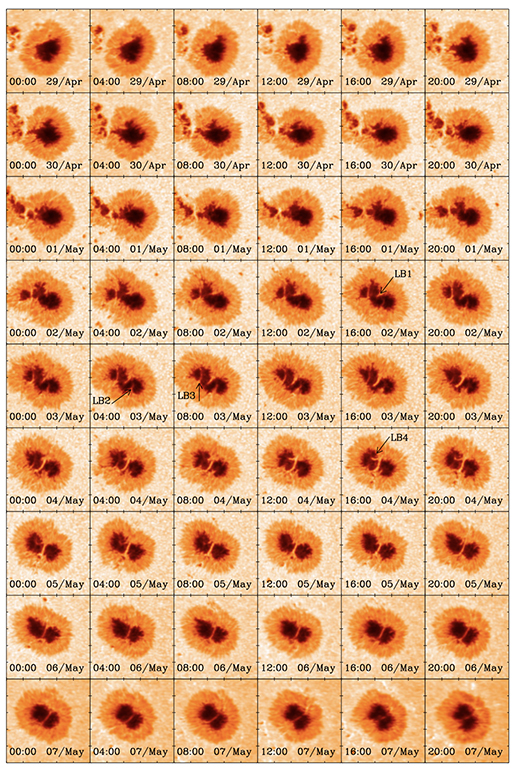Ana, who is from Spain, was well equipped to start working at Rosseland Centre for Solar Physics (RoCS) in December 2020. She has a bachelor's degree in physics, a master's degree in Astrophysics, and a PhD degree in Solar Physics from the University of La Laguna and Instituto de Astrofísica de Canarias.
- Where have you studied before and in what field? Differences from or similarities to your current project.
- After my PhD degree I moved to California to do my first postdoctoral research at Stanford University funded by NASA. I had the opportunity to work closely with the team that developed the instrument HMI on board the SDO satellite, launched in 2010. My main field of investigation is mostly focused on the long-term evolution of active regions, in particular I have studied the evolution over several days of the magnetic field topology in the solar photosphere of active regions.

- What are you going to study?
- My current interest aims at the characterization of light bridges through the whole solar atmosphere, from the photosphere to the corona to see the extension of these structures.
- How do you plan to solve/ answer to the main question?
I will take data from light bridges observing spectral lines that are formed at different layers along the solar atmosphere and after inferring the atmospheric parameters I will be able to characterize magnetically and thermodynamically the atmosphere above these structures.
- What brought you to Oslo? Why RoCS and why Norway in general?
This project is only possible in an institution like RoCS group as their researchers are experts at understanding the chromosphere and corona. Also, this institution has access to the new instrumentation/telescope and experience with the inversion codes necessary for the project. So, the combination of these facilities and the knowledges and experience makes this project unique and world leading to develop here in RoCS.
- How can you describe your experience at RoCS and in Oslo so far?
- Due to the pandemic, I have not been able to meet many researchers or go to work at the institute. However, I have been able to perceive a very good atmosphere among all the researchers. So, I guess it will be easy to join them when the restrictions are over.
- What do you expect from this experience?
Concerning RoCS, I expect to expand my knowledge of observations and light bridges in particular. Regarding Oslo and Norway, I would like to enjoy the Norwegian nature, snow, and if it is possible, I would like to witness the northern lights, one of my dreams since I was a child.
